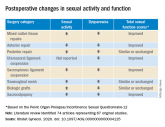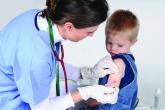News

COVID-related immunization gaps portend return of preventable infections
- Author:
- Jill D. Pivovarov
Reversal of herd immunity is possible in the face of growing vaccine hesitancy.
News

U.S. mothers underestimate role breastfeeding plays in curbing breast cancer
- Author:
- Jill D. Pivovarov
Only 36% of U.S. mothers currently breastfeed as recommended.
News
Gender surgical outcomes differ following puberty suppression
- Author:
- Jill D. Pivovarov
Results indicate puberty suppression may aid technical feasibility of varied surgical techniques.
News

Two consecutive negative FUBC results clear S. aureus bacteremia
- Author:
- Jill D. Pivovarov
The majority of cases had a limited duration of less than 48 hours of bacteremia.
News
Prophylactic HIV treatment in female STI patients is rare
- Author:
- Jill D. Pivovarov
Female patients with STIs are more likely to contract HIV, regardless of insurance status.
News

Menstrual irregularity appears to be predictor of early death
- Author:
- Jill D. Pivovarov
Cardiovascular disease and smoking increase risk.
News

POP surgeries not tied to decreased sexual functioning
- Author:
- Jill D. Pivovarov
Pelvic organ prolapse surgeries should be planned with the goal of optimizing sexual function postoperatively.
News
Early hearing impairment interventions key to kindergarten readiness
- Author:
- Jill D. Pivovarov
Integrated data systems play key role in identifying relevant topics in academic outcomes for early intervention recipients.
News

Tobacco-free homes yield more tobacco-free youth
- Author:
- Jill D. Pivovarov
Smokeless products substantially reduce likelihood of parental suspicion and awareness.
News

Flu vaccine significantly cuts pediatric hospitalizations
- Author:
- Jill D. Pivovarov
More than half (58%) of hospitalized children had underlying medical conditions and 38% had at least one hospitalization in the past year.
News

Prescribe Halloween safety by region, current conditions
- Author:
- Jill D. Pivovarov
Setting a good example for our children is just as important as protecting them from the virus.
News

PHiD-CV with 4CMenB safe, effective for infants
- Author:
- Jill D. Pivovarov
Immunogenicity achieved with three-dose scheduling.
News

Racial, ethnic minorities often don’t practice sun protective behaviors
- Author:
- Jill D. Pivovarov
Cultural beliefs, stigma, and personal preferences may affect behaviors.
News

Key risk factors of pediatric cervical spinal injury identified
- Author:
- Jill D. Pivovarov
This needs to be validated in a large multicenter study.
News

Penicillin-susceptible Streptococcus pneumoniae most common cause of bacteremic CAP
- Author:
- Jill D. Pivovarov
Narrow-spectrum aminopenicillins should be used specifically to treat children hospitalized from suspected bacterial CAP.
